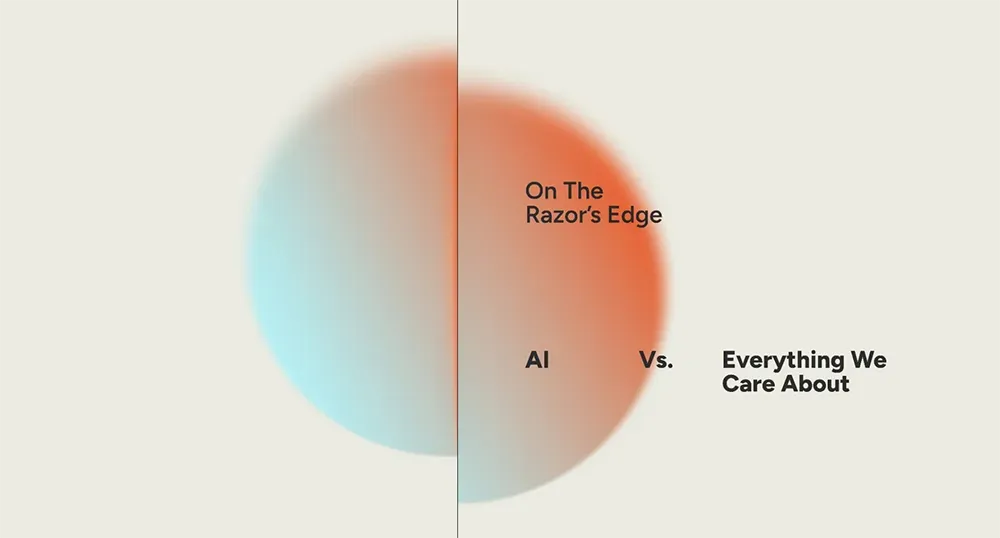Strategy Keynote Speaker: Understanding 3D Printing Benefits and Uses

Strategy Keynote Speaker: Understanding 3D Printing Benefits and Uses
In today's rapidly evolving world of technology and innovation, it is crucial for businesses to adapt and stay ahead of the curve. One such game-changing technology that has captured the attention of industries across the globe is 3D printing. As a Strategy Keynote Speaker, it is my mission to help organizations understand the immense benefits and uses of this groundbreaking technology. By unraveling its potential and exploring real-world examples, we can truly grasp the power of 3D printing and its ability to revolutionize businesses in countless ways.
Unraveling the Potential of 3D Printing
3D printing, also known as additive manufacturing, is a process that allows for the creation of three-dimensional objects from a digital model. Unlike traditional manufacturing methods that involve subtracting material through cutting or molding, 3D printing builds objects layer by layer, resulting in highly precise and complex designs. This technology has opened up endless possibilities across various industries, from healthcare to aerospace, architecture to automotive, and everything in between.
One of the key advantages of 3D printing is its ability to reduce manufacturing costs significantly. Traditional manufacturing methods often involve expensive tooling and molds, which can take a considerable amount of time and money to produce. With 3D printing, these costs are eliminated, as objects can be directly printed from a digital file, reducing production time and costs substantially. This not only increases efficiency but also allows for greater design flexibility and customization.
Furthermore, 3D printing enables rapid prototyping, allowing businesses to iterate and refine their designs quickly. This has proven to be particularly beneficial in industries such as product development and engineering, where the ability to visualize and test a physical model before mass production is crucial. By utilizing 3D printing technology, companies can streamline their product development processes and bring innovative concepts to market faster than ever before.
Let's delve deeper into the impact of 3D printing in the healthcare industry. The medical field has embraced this technology with open arms, revolutionizing the way medical devices and prosthetics are created. With 3D printing, healthcare professionals can now produce customized implants and prosthetics that perfectly fit a patient's unique anatomy. This not only improves patient comfort but also enhances the effectiveness of treatments and surgeries.
Moreover, 3D printing has also played a significant role in the field of aerospace. The ability to create complex and lightweight components has enabled engineers to design more fuel-efficient aircraft, reducing carbon emissions and contributing to a greener future. Additionally, 3D printing has facilitated the production of intricate and optimized engine parts, leading to improved performance and reliability.
In the realm of architecture, 3D printing has sparked a wave of innovation. Architects and designers can now create intricate scale models of their designs, allowing clients and stakeholders to visualize the final product in a more tangible way. This technology has also paved the way for the construction of unique and sustainable structures, as 3D printers can use eco-friendly materials and minimize waste during the building process.
The automotive industry has also embraced 3D printing, utilizing it for various applications such as rapid prototyping, customized parts production, and even the creation of entire vehicles. With 3D printing, car manufacturers can optimize the design and performance of their vehicles, resulting in lighter and more fuel-efficient cars. Additionally, this technology has opened up opportunities for personalized car customization, allowing customers to tailor their vehicles to their specific preferences.
As we can see, the potential of 3D printing is vast and far-reaching. Its ability to reduce manufacturing costs, enable rapid prototyping, and facilitate customization has transformed industries across the board. From healthcare to aerospace, architecture to automotive, 3D printing has revolutionized the way we design, create, and innovate. As technology continues to advance, we can only imagine the endless possibilities that lie ahead.
Strategy Keynote Speaker's Perspective on 3D Printing
As a Strategy Keynote Speaker, I have had the privilege of witnessing firsthand the transformative effects of 3D printing on businesses across various sectors. From enhancing supply chain management to revolutionizing the healthcare industry, the potential of 3D printing is truly awe-inspiring.
By embracing this technology, companies can leverage it to gain a strategic advantage over their competitors. For instance, in the automotive industry, 3D printing has revolutionized the way car parts are manufactured. Instead of relying on traditional molds and tooling, manufacturers can now use 3D printers to produce intricate and lightweight components with superior strength and performance. This not only reduces material waste but also allows for better fuel efficiency and overall sustainability.
Moreover, the impact of 3D printing goes beyond just the manufacturing process. With the ability to create complex geometries and intricate designs, 3D printing opens up a world of possibilities for product customization. Companies can now offer personalized products to their customers, tailored to their specific needs and preferences. This level of customization not only enhances customer satisfaction but also strengthens brand loyalty.
Similarly, the healthcare industry has experienced a paradigm shift with the advent of 3D printing technology. Surgeons can now utilize 3D-printed models to better prepare for complex surgeries by practicing on accurate replicas of a patient's anatomy. This has led to improved surgical outcomes, reduced operating times, and ultimately, better patient care.
Furthermore, 3D printing has also played a significant role in the field of prosthetics. Traditionally, prosthetic limbs were expensive and time-consuming to produce, often requiring multiple fittings and adjustments. However, with 3D printing, the process has become more efficient and cost-effective. Customized prosthetics can now be created quickly and at a fraction of the cost, making them more accessible to those in need.
Another area where 3D printing has made a remarkable impact is in the field of architecture and construction. Architects and engineers can now use 3D printers to create intricate scale models of their designs, allowing them to visualize and refine their concepts with greater accuracy. Additionally, 3D printing can be used to fabricate building components, such as walls and facades, reducing construction time and costs.
It is important to note that while 3D printing has brought about numerous benefits, it also presents challenges that need to be addressed. Intellectual property concerns, quality control, and the ethical implications of printing certain objects are just a few of the issues that need careful consideration as this technology continues to evolve.
In conclusion, 3D printing has the potential to revolutionize industries and transform the way we manufacture, design, and innovate. From automotive to healthcare, architecture to prosthetics, the possibilities are endless. As a Strategy Keynote Speaker, I am excited to witness the continued advancements in 3D printing and the impact it will have on businesses and society as a whole.
Embracing Innovation: The Power of 3D Printing
In today's fast-paced business landscape, where innovation is a key driver of success, embracing emerging technologies like 3D printing is vital. By incorporating 3D printing into their strategies, companies can unlock new avenues for growth and differentiation.
One remarkable aspect of 3D printing is its ability to democratize manufacturing. In the past, setting up a manufacturing facility required significant capital investments and expertise. However, with 3D printing, businesses can now produce on-demand, eliminating the need for large-scale production lines. This empowers entrepreneurs and small businesses to bring their ideas to life without the financial burdens traditionally associated with manufacturing.
Moreover, 3D printing fosters a culture of innovation and creativity within organizations. By enabling rapid prototyping and design iterations, this technology encourages experimentation and the exploration of groundbreaking concepts. Companies that embrace this mindset create an environment conducive to innovation, where employees feel empowered to think outside the box and push boundaries.
Imagine a world where customized products are the norm. With 3D printing, this vision becomes a reality. Gone are the days of mass-produced, one-size-fits-all items. Instead, individuals can now have products tailored to their specific needs and preferences. Whether it's a personalized smartphone case, a custom-designed piece of jewelry, or even a prosthetic limb perfectly fitted to a person's unique anatomy, 3D printing allows for limitless customization.
But it's not just about individual customization. 3D printing also opens up new possibilities for product innovation and design. With traditional manufacturing methods, certain shapes and geometries may be difficult or even impossible to produce. However, 3D printing removes these limitations, enabling the creation of complex and intricate designs that were once unimaginable. This opens up a world of possibilities for architects, designers, and engineers to push the boundaries of what is possible.
Furthermore, 3D printing has the potential to revolutionize supply chains and logistics. With traditional manufacturing, products often need to be shipped from one location to another, resulting in long lead times and increased costs. However, with 3D printing, products can be produced locally, reducing the need for long-distance transportation. This not only reduces carbon emissions but also allows for faster delivery times and greater flexibility in meeting customer demands.
In addition to its impact on manufacturing and design, 3D printing also has significant implications for the medical field. From creating patient-specific surgical guides to printing organs for transplantation, this technology has the potential to revolutionize healthcare. Imagine a future where doctors can 3D print personalized implants or prosthetics, tailored to each patient's unique anatomy. This could significantly improve patient outcomes and quality of life.
As with any emerging technology, there are challenges and limitations to consider. 3D printing is not without its drawbacks, such as the high cost of equipment and materials, as well as the need for specialized training. However, as the technology continues to evolve and become more accessible, these barriers are likely to diminish.
In conclusion, embracing 3D printing is not just about adopting a new tool or technology. It is about embracing a mindset of innovation, creativity, and customization. By incorporating 3D printing into their strategies, companies can unlock new opportunities for growth and differentiation, while also contributing to a more sustainable and personalized future.
How a Strategy Keynote Speaker Translates 3D Printing into Business Growth
As a Strategy Keynote Speaker, my role goes beyond simply explaining the benefits and uses of 3D printing. I help organizations understand how to harness the power of this technology to drive tangible business growth.
Firstly, it is crucial to recognize that 3D printing is not a one-size-fits-all solution. Each industry, each company, has unique challenges and opportunities. Through in-depth research and analysis, I work closely with businesses to identify areas where 3D printing can deliver the most significant impact. Whether it's streamlining the supply chain, optimizing production processes, or exploring new revenue streams, the possibilities are vast and exciting.
Secondly, successful implementation of 3D printing requires a well-thought-out strategy. This includes understanding the technology's limitations, selecting the right materials and printers, and establishing quality control protocols. By developing a comprehensive roadmap, organizations can minimize risks and maximize the return on their investment in 3D printing.
Lastly, I emphasize the importance of fostering a culture of innovation and adaptability within the organization. This includes training employees on the fundamentals of 3D printing, encouraging cross-functional collaboration, and creating a supportive environment for experimentation and learning. Together, these elements ensure that businesses can fully leverage the potential of 3D printing and stay ahead in an ever-evolving market.
Leveraging 3D Printing For Strategic Advantage
As we conclude our exploration of 3D printing's benefits and uses, it is clear that this technology holds the key to unlocking strategic advantages for businesses across industries. By harnessing its potential and embracing innovation, organizations can stay ahead of the competition and thrive in a rapidly changing business landscape.
As a Strategy Keynote Speaker, I am committed to helping businesses navigate the exciting world of 3D printing and achieve long-term success. Together, let us unlock the full potential of this game-changing technology and chart a course towards a prosperous future.
Conclusion
In conclusion, 3D printing is a revolutionary technology that offers numerous benefits and uses across industries. From reducing manufacturing costs and enabling rapid prototyping to fostering innovation and unlocking strategic advantages, the potential of 3D printing is limitless. As a Strategy Keynote Speaker, my goal is to help organizations understand the immense value this technology can bring and guide them in leveraging it for sustainable business growth. So, let us embrace the power of 3D printing and embark on a transformative journey towards a brighter and more prosperous future.
FAQ
What is 3D printing and how does it work?
3D printing, also known as additive manufacturing, is a process that creates three-dimensional objects from a digital model. It builds objects layer by layer, using materials such as plastic or metal, based on the design specifications provided in the digital file.
What are the benefits of 3D printing?
Some of the key benefits of 3D printing include reduced manufacturing costs, rapid prototyping, and customization. It eliminates the need for expensive tooling and molds, allows for quick iterations and testing of designs, and enables the production of personalized products tailored to specific needs and preferences.
How is 3D printing being used in different industries?
3D printing is being used in various industries, including healthcare, aerospace, architecture, and automotive. In healthcare, it is revolutionizing the creation of customized implants and prosthetics. In aerospace, it is enabling the production of lightweight and fuel-efficient components. In architecture, it is facilitating the construction of unique and sustainable structures. In the automotive industry, it is being used for rapid prototyping and customized parts production.
Contact a Strategy Keynote Speaker for your event
Are you ready to unlock the potential of 3D printing for your business? Dr Mark van Rijmenam, a renowned Strategy Keynote Speaker, is here to guide you on this transformative journey. With his extensive experience and deep understanding of this game-changing technology, Dr van Rijmenam will help you explore the endless possibilities 3D printing can bring to your organization. He will provide invaluable insights, tailored strategies, and real-world examples to help you leverage 3D printing for sustainable business growth. Don't miss this opportunity to stay ahead of the curve in this rapidly evolving technological landscape. Simply complete the form below and we will be in touch within 24 hours to discuss how Dr van Rijmenam can add immense value to your next event.





